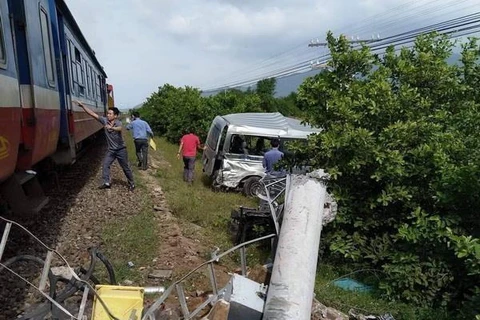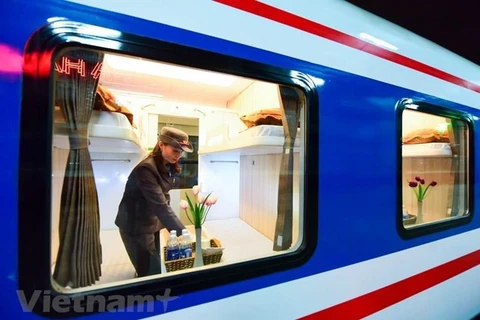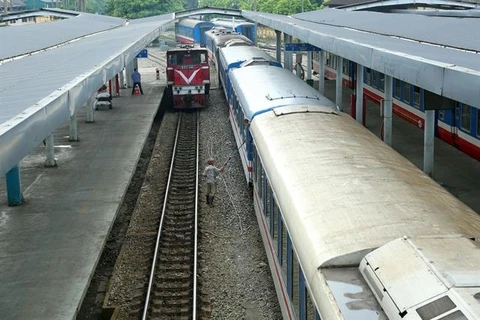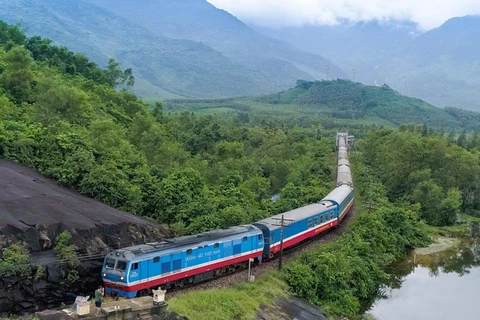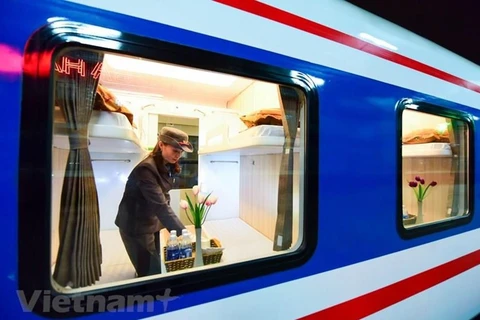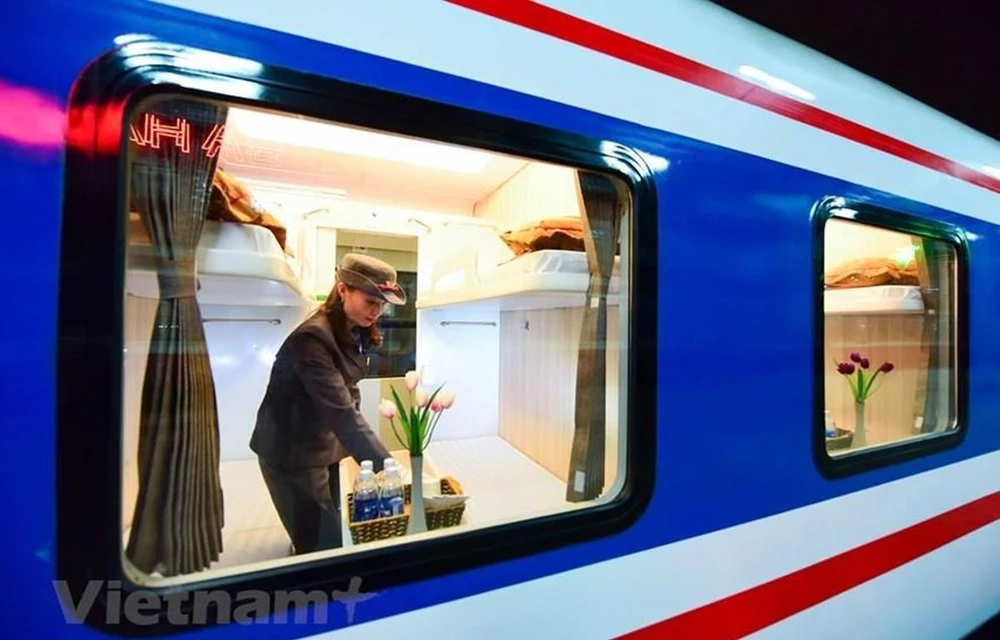
Hanoi (VNA) – By teaming up with a foreign partner and stepping up the mechanical work, the railway sector will build hundreds of high-quality carriages.
From now to 2023, the railway sector has to build 300 high-quality carriages, and invest in 32 locomotives, and another 27 locomotives by 2025 so as to serve transport demand.
Explaining the need to invest in new facilities, Chairman of the Vietnam Railway Corporation (VNR) Members' Council Vu Anh Minh said outdated locomotives and carriages consume much fuel and cost high repair and maintenance expenses while the efficiency is low. Besides, according to regulations on usage period in the 2017 Law on Railway, those locomotives and carriages are also no longer qualified for operations.
The VNR reported that it is managing 282 locomotives, 15 of which have had their operations suspended. Therefore, the number of locomotives currently in use is 267, including 257 using the 1,000mm track gauge and 10 using the 1,435mm track gauge. Among them, 115 locomotives have been operated for less than 20 years, 18 between 20 and under 30 years, 89 between 30 and under 40 years, and 45 over 40 years.
The number of carriages serving passenger transportation total 1,008, including 667 used for less than 30 years, 75 between 30 and under 35 years, 103 between 35 and under 40 years, and 163 over 40 years.
[Vietnam to have high speed train]
Minh said the VNR has discussed with the foreign partner about ways to invest in new facilities without facing capital pressure so as to put new trains into use.
This partner will build and rent trains out to the VNR, and after the rental period expires, those trains will belong to the corporation (in fact, it is deferred purchase). With this solution, the producer, the renter and the seller will be one, thus reducing intermediary cost as well as financial cost, he noted.
Additionally, train production cost will also be cut down thanks to lower input cost, reduced by 10 percent compared to the VNR’s direct investment. The investor has the responsibility to repair and maintain facilities while the builder must ensure that the trains have the best quality in order to avoid high maintenance cost in the future.
Minh elaborated that it takes about 300 billion VND (nearly 13 million USD) to build a train and another 40 billion VND for repair and maintenance work during its life cycle. In case of the abovementioned deferred purchase, when the 12-year project concludes, the firm will only have to pay a maximum of 300 billion VND, instead of 340 billion VND, while it won’t have to take out loans. Part of the money on ticket sales will be used to gradually pay the train building cost.
With this solution, he expressed his hope that in the next 3 – 5 years, 50 new trains will be put into operation.
This solution is the combination of sale & leaseback of the aviation sector, finance leasing of the navigation industry, and hire purchase of the retail sector, but it can resolve all problems as all the suppliers are one, he said.
On the other hand, the railway sector also made consideration, the VNR chairman said, adding that it will upgrade the carriages whose usage period is still available and ensure that their quality must be equivalent to at least 80 – 90 percent of new ones, thus creating more trains with the best quality to serve passengers.
Responding to the question about whether the train building and renting will lead to a reduction in the proportion of domestically made facilities in the sector, Minh affirmed the VNR requested its partner to hire or form a joint venture with the Gia Lam Train Joint Stock Company or Di An company to build trains.
Logistics in the railway sector is very important since without it, the sector is unable to master technology and has to import from other countries, he noted./.
| In 2017, the Gia Lam and Di An companies began to build new carriages at a cost of some 11.8 billion VND each carriage. After one year of boosting links with the mechanical sector, it now costs only 8.6 – 8.8 billion VND to build a carriage while the quality is improved. |
